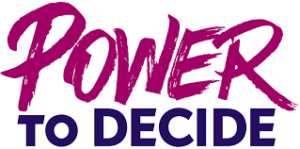
The world of advocacy and grassroots mobilization has changed, and technology is playing an increasingly crucial role in shaping what advocacy success looks like. Organizations that traditionally relied solely on in-person methods of outreach have had to pivot to online tactics to meet the needs and demands of advocates and the current landscape. Email, social media, text messaging, and mobile optimization are now mainstays in advocacy.
Why Having a Digital Advocacy Strategy Is Important
Digital advocacy efforts provide organizations with a broader reach than physical efforts alone. “We have a bigger reach with our virtual advocacy lobby days,” says Jeanine Santelli, executive director of the American Nurses Association of New York. “We had far more nurses across the state who were able to engage through the digital platform, and we reached all of our state legislators, which was completely impossible on a regular lobby day.”
A digital advocacy strategy is essential in a post-pandemic world because it allows organizations to reach a wider audience and engage with supporters more effectively. After the pandemic, many people became used to digital offerings and meetings and became familiar with tools and technology that make digital advocacy more seamless. And as advocate demographics’ chance to include younger audiences, now more than ever, supporters expect to be able to participate in advocacy digitally.
That’s why a digital advocacy strategy is crucial for organizations to maintain their edge with advantages such as advanced targeting, flexibility in messaging, and better ways to engage supporters. With people spending more time online (screen time has increased drastically since COVID-19), organizations that prioritize digital advocacy can build a strong online presence and connect with supporters in a way that is both efficient and cost-effective. In addition to in-person advocacy, digital advocacy strategies provide a range of tools and platforms to communicate your message and mobilize your supporters, from social media campaigns to virtual events.
Building Your Strategy
Creating a digital advocacy strategy is about more than setting up a website or social media accounts. Online advocacy encompasses many tactics, so an optimal digital advocacy strategy should include multiple channels. The strategy-building process should involve:
- Setting your goals. Create concrete, measurable goals, whether around fundraising, mobilizing supporters, or moving legislation forward.
- Defining your target audience. Identify who you want to reach and what messages will resonate with them.
- Creating the right content. Develop content that speaks to your audience and their passions, and gives them a reason to care about and join your efforts.
- Measuring your success. After implementing your strategies, an integral part of evaluating success is measuring the outcomes, whether that’s social media engagements, email open rates, or lawmakers reached.
It’s OK to start small as you ramp up your digital strategy. “Just jump in and start wherever you are with building a digital advocacy strategy,” says Dierdra Hawkes, director of programs and advocacy at the American School Counselor Association. “If you can hone in on one topic and create a strategy just from that one small thing, it helps you build your confidence, you’ll understand what to do differently next time, and it helps create a better future strategy.”
Here are five things to consider as you build or refine your digital advocacy strategy.
1. Use the Power of Online Petitions
Online petitions are a valuable tool for growing your community through shareable efforts. Since this is a digital tool, they are easy to shared on social media and email. In addition, petitions allow you to collect important information about potential supporters that you can store and sort in your advocate data management system. Online petitions let you create messages to decision-makers — like CEOs and legislators — which can be edited, signed, and sent from supporters with minimal effort on their part.
When creating an online petition, make sure it includes:
- A relevant call-to-action within the title that is repeated later
- Succinct and clear body copy that includes all relevant information
- Your logo and branding
- A reminder of who your organization serves, your affiliates, and any support you have from other organizations or people
- Inspiring, engaging visuals throughout
- Actionable buttons that use call-to-action language
When there’s a piece of legislation Santelli’s organization supports or opposes, she creates a template letter to legislators that supporters can tweak before sending. “We provide a baseline message so we can ensure we’re sending a consistent message,” she says. “In a face-to-face meeting, sometimes people go on a tangent or talking points come up that aren’t representative of what our association stands for.” Pre-writing a scripted message in an online petition or campaign ensures the messaging doesn’t get diluted.
Make sure your message is clear before asking supporters to sign on. “In making sure a campaign is effective, you have to put some thought into the messaging,” advises Hawkes. “Be very intentional about making sure your message is clear and that your audience will understand specifically what you are asking for.”
2. Engage Supporters With Social Media
A social media strategy offers opportunities for grassroots efforts to reach a broader audience. It provides flexibility, immediacy, engagement, and a variety of content options. Most importantly, it can give you a level of engagement across a wide demographic. Nearly half of advocacy professionals surveyed reported social media has had a significant impact on their industry in the last few years, which indicates how important it is for your advocates to share your message with their networks, creating a more personal connection with your issues.
In addition to engaging supporters, social media is an excellent place to connect with lawmakers. “Make sure the information you put out is going to bring clarity and be helpful,” Hawkes recommends. “We find that lawmakers look at our social media when they’re seeking information to understand the issues better.”
”"Be very intentional about making sure your message is clear and that your audience will understand specifically what you are asking for."
Dierdra HawkesDirector of programs and advocacy, American School Counselor Association
Choose Your Social Media Platforms for Advocacy
This year’s VoterVoice Advocacy Benchmark Report found Facebook remains by far the number one social network for driving traffic to users’ action centers. YouTube brings in about 8 percent of traffic, closely followed by Instagram Stories, which continue to gain ground each year.
Despite all the legal battles, TikTok continues to grow — a wider audience is migrating to the platform and more millennials are downloading the app. “Facebook, Instagram, and Twitter are maturing platforms,” says Jennifer Pullinger, a social media strategist. “Instagram is pivoting to stay as relevant as possible, but TikTok is where the audience is going.”
TikTok is the #1 app in the Apple Store’s entertainment category and is growing hugely in active users. “Those numbers should at least give organizations a reason to think about using it for messaging, calls to action, and advocacy campaigns,” Pullinger says.
By collecting data on your target audience, your advocacy team can decide which social media platforms your supporters engage with the most. Even if this data isn’t complete, you can still roll out specific campaigns and messaging for each platform that accomplishes awareness, event sign-up, fundraising, community growth, and more.
Use Advocacy Tools that Enhance Social Efforts
To make the most of social media, you should employ an advocacy platform that makes admin work easier for your team. This platform should have:
- Sharing buttons that allow supporters to share the campaign instantly with their social media networks (found commonly on online petitions)
- Action alerts that can be shared easily and instantly across social sites and emails to immediately call your supporters to action
- Automation aggregators that let you easily draft, publish, and schedule posts across multiple social media platforms
10 Tips to Boost Your Advocacy Efforts Using TikTok
3. Easily Reach Supporters Through Automated Email
With automated email systems created specifically for advocacy, it’s easier than ever to reach supporters at different stages of their journey, with customized messages that resonate with their interests.
These tools allow you to target supporters based on their initial interaction with your organization, whether through in-person sign-up forms, sponsored emails, social media, or other channels. This personalized approach can make all the difference in your email campaigns, as it allows you to tailor your messaging to each supporter’s interests, history, and preferences. By segmenting your email lists based on factors such as previous interactions, frequency of engagement, and content preferences, you can provide a more engaging experience for your supporters.
An email advocacy platform also help you save time and resources. It can help you create a series of pre-written messages that will be automatically sent to your supporters at specific times or stages in their journey. This eliminates the need for manual follow-up emails, saving time and ensuring no supporter falls through the cracks.
Emails to your advocacy supporters should always include:
- The person’s first name. This creates a more personal connection and makes the message feel more targeted
- New, meaningful information. Avoid sending repetitive content that your advocates have seen before
- Calls to action with links. Make it clear what you are asking your advocates to do
- Mobile optimization. Nearly three-quarters of traffic to advocacy centers comes from mobile devices, according to the VoterVoice 2022 Advocacy Benchmark Report
If a supporter’s initial interaction with your organization didn’t let you know their general interests or important demographic details, you can start with a “getting to know you” email. This message surveys the advocate to find out which topics are most important to them, allowing you to further segment advocates into lists, alerts, and automated email content. This can be an effective way to gather information about your supporters and provide them with more personalized content in the future.
4. Ensure Your Website Is Streamlined & Actionable
In the world of digital advocacy, your organization’s website is your primary online presence. It’s crucial to make it user-friendly, intuitive, and actionable. Your website should not only serve as a repository for all the necessary information about your advocacy efforts, events, and frequently asked questions. It should also provide clear calls to action on every page, making it easy for visitors to get involved.
“Stakeholders may visit your site who know nothing about your issues, so the basic information needs to be there and be very visible and accessible,” Hawkes says. She suggests organizing information clearly throughout the website so users don’t need to navigate too much to find what they need.
To ensure that your website is streamlined and actionable, start by identifying its primary goal. Whether it’s to encourage visitors to sign up for your email list, donate to your cause, or take action in another way, your website should be designed with that goal in mind. Additionally, make sure to use clear and concise language, avoid jargon and complex terms that newcomers might not understand, and confirm that your website is optimized for both desktop and mobile use.
5. Data Organization & Analysis
Last but not least, having a well-organized and maintained database can make or break your advocacy efforts. Without proper data management, your team may struggle to stay on top of the latest trends and developments within your supporter base, leading to missed opportunities and lost supporters. It is crucial to have a digital advocacy system in place that can help you easily track and analyze supporter interactions, as well as provide valuable insights into their behavior and preferences.
Your advocacy data management tool should have supporter profiles, with basic information about your advocates such as their name, address, email, age, social media details, and other demographic details. This information lets you better understand your supporters and tailor your outreach efforts to their preferences and interests, creating more personalized messaging and increasing engagement and retention rates.
In addition to supporter profiles, your advocacy platform should track the interaction history associated with each advocate’s email address or social media profile. You can follow all interactions an advocate has had, such as sign-ups, submissions, and donations. By having this information on hand, you can develop a comprehensive understanding of each supporter’s behavior and preferences, allowing you to create more targeted outreach efforts.
Your advocacy data management tool should also allow you to easily search through your supporter database for reporting and insight analysis purposes, and to see who your most engaged advocates are. This can help you identify trends and patterns in your supporter base, allowing you to make data-driven decisions about how you allocate your resources and optimize your outreach efforts.
Winning Digital Advocacy Strategy Examples
Here’s how advocacy teams are using their digital advocacy strategies to reach their goals, empower supporters, and influence lawmakers.
Power to Decide Leverages Digital Strategy for Advocacy Wins
 Power to Decide is an organization that works to ensure young people have access to sexual and reproductive health information and services. With the Women’s Health Protection Act of 2021, it was very important for them that advocates contact their senators and let them know their thoughts, says Rachel Fey, vice president of policy and strategic partnerships at Power to Decide. Fey’s team used VoterVoice to make it easy for its supporters to contact their legislators digitally, and the most recent push saw 7,000 messages from 2,100 advocates.
Power to Decide is an organization that works to ensure young people have access to sexual and reproductive health information and services. With the Women’s Health Protection Act of 2021, it was very important for them that advocates contact their senators and let them know their thoughts, says Rachel Fey, vice president of policy and strategic partnerships at Power to Decide. Fey’s team used VoterVoice to make it easy for its supporters to contact their legislators digitally, and the most recent push saw 7,000 messages from 2,100 advocates.
“We got a remarkable pickup,” Fey says. “The ability to help folks easily take action, with only a few minutes of their time, has been really great, and seeing the kinds of things that resonate with folks has been really interesting and sometimes surprising.”
Using VoterVoice’s digital advocacy tools helped the Power to Decide team collect data, too. They monitored metrics that show how many people were contacting members of Congress based on a call to action. The government affairs team tracked what was resonating with advocates to show impact, “which is really important for me as I talk to our board and our funders that want to understand how we’re actually moving the needle,” Fey says.
This Association Mobilizes Members to Influence Policy Decisions
 When the Washington state legislature proposed to repeal a 2003 “ergonomics” law, which would have given the state’s Labor and Industries agency the authority to set new rules on working practices to address musculoskeletal injuries, The Washington Food Industry Association (WFIA) used VoterVoice to quickly mobilize its members and make their voices heard. There’s a lot of repetitive movement in the grocery industry so this was a huge issue for WFIA and its members as this bill would have translated into an important cost burden to these businesses.
When the Washington state legislature proposed to repeal a 2003 “ergonomics” law, which would have given the state’s Labor and Industries agency the authority to set new rules on working practices to address musculoskeletal injuries, The Washington Food Industry Association (WFIA) used VoterVoice to quickly mobilize its members and make their voices heard. There’s a lot of repetitive movement in the grocery industry so this was a huge issue for WFIA and its members as this bill would have translated into an important cost burden to these businesses.
“We had almost a quarter of [our members] respond to that action alert and send these messages to their lawmakers saying ‘please do not pass this, this is going to cost us hundreds of thousands of dollars, we already do X, Y, and Z to make sure that ergonomic injuries aren’t happening in our industry, and we’re really cognizant of that,’” says Katie Doyle, government affairs director at WFIA. “Because of those messages, our industry was one of the business leaders on the issue.”
Enhance Your Digital Advocacy Strategy with VoterVoice
In this fast-paced digital world of short attention spans and competition to cut through the noise, it’s more important than ever to have the right advocacy solution to move your issues forward. Digital advocacy platform VoterVoice makes sure you always have the tools you need at your fingertips. VoterVoice is there to help you organize and engage supporters and measure your impact while ensuring that your message is heard by those with the power to enact change and drive results.
Ready to see for yourself?
See how our 360-degree approach to managing advocacy and policy issues can help you promote action, manage risk, as well as assess your impact and drive results.


